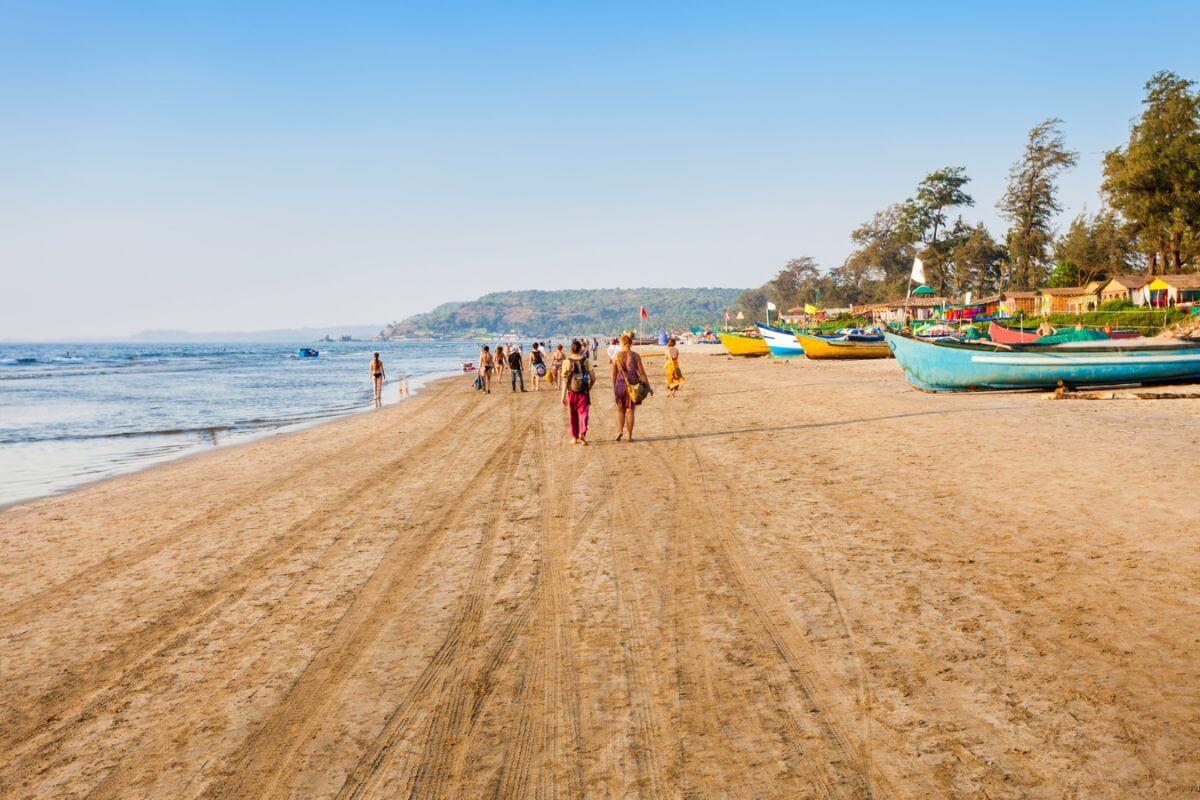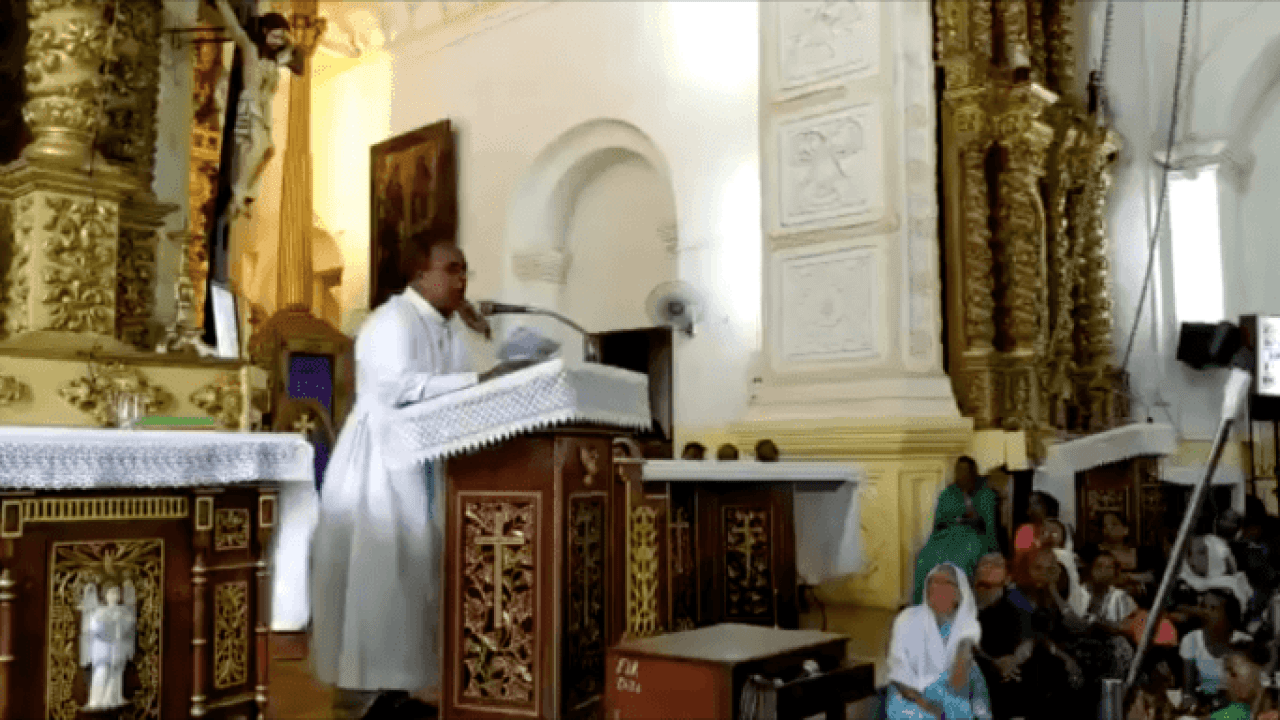The Indian state of Goa is renowned for its stunning beaches, mouthwatering cuisine, and extensive cultural history. Among its many cultural attractions, Goan churches built by the Portuguese rulers stand out due to their Baroque architecture that projects exquisite and striking displays of colonial architecture in all of India.
From 1510 until 1961, the Portuguese ruled Goa for more than four centuries, influencing the region’s culture and architecture inimitably. During this time, the Baroque architectural style, which is distinguished by extravagant facades, lavish decorations, and detailed detailing, developed and came to be associated with the region’s ecclesiastical structures.
Here are ten of Goa’s most stunning Baroque churches that every traveller ought to make a point of visiting:
1. The Basilica of Bom Jesus
Located in Old Goa, the Basilica of Bom Jesus is one of the most famous churches in Goa. Built-in the 16th century, it is famous for housing the mortal remains of St. Francis Xavier, a Jesuit missionary who played an important role in spreading Christianity in Asia.
The Basilica of Bom Jesus’ architecture is a distinctive fusion of many styles that reflects the cultural and historical influences on the area. The basilica was constructed in the Baroque architectural style, which had its roots in Italy but gained popularity in Portugal in the 17th century. Ornate embellishments, the use of light and shadow, and dramatic effects are traits of the Baroque style.
The basilica’s façade is covered in ornate figures and carvings that are typical of the Baroque period. The Basilica of Bom Jesus’ interior is equally spectacular, featuring a lofty nave, lovely murals, and elaborate altars. Corinthian columns that have magnificent carvings and ornaments support the nave. Frescoes painted on the basilica’s walls portray events from St. Francis Xavier’s life.
The frescoes are an excellent illustration of the Mannerist aesthetic, which was prominent in Italy in the late Renaissance. Elegant, elongated figures and a striking use of colour define the style.
One of the three orders of ancient architecture, the Doric style, is also present in the basilica’s design. Doric architecture is distinguished by its straightforward, robust columns and little ornamentation. Doric pilasters adorn the basilica’s exterior, which brings a touch of simplicity to the overall design. The Basilica of Bom Jesus is a distinctive and fascinating example of the cultural and historical influences on Goa’s architecture because it combines Mannerist, Doric, and Baroque elements.
2. Se Cathedral Church
Se cathedral, which can be seen in Old Goa, India, was constructed in the 16th century to honour the Portuguese conquest of the area’s Muslim rulers. Portuguese Gothic architecture is beautifully displayed in the Se Cathedral, also called the Cathedral of St. Catherine. The cathedral is one of the biggest churches in Asia, and thanks to its breathtaking architecture, it is also one of Goa’s most popular tourist destinations.
Portuguese Gothic architecture, which is distinguished by its grandeur, complexity, and use of light and shadow, is best exemplified by the Se Cathedral. Basalt is used to construct the cathedral’s façade, which is embellished with elaborate carvings and figures. The Manueline style, which is distinguished by its use of nautical themes like ropes, anchors, and seashells, is beautifully displayed in the main entryway. The cathedral’s interior, with its soaring nave, magnificent stained-glass windows, and ornate altars, is equally magnificent.
The Se Cathedral’s design pays homage to the talent and craftsmanship of the Portuguese designers and builders. The cathedral is a remarkable illustration of how European and Indian forms can coexist, and it exhibits the region’s cultural and historical influences. The Golden Bell, one of the largest bells in the world, is housed in the bell tower of the cathedral, which is an engineering marvel. For anyone interested in Goa’s history, culture, or architecture, the Se Cathedral is a must-see location.
3. Church of St. Francis of Assisi
This church, located in Old Goa, was built in the 17th century and is a perfect example of the Portuguese-Baroque style of architecture. Its stunning façade features intricate carvings and sculptures.
One of the best-preserved churches in the area, the church was constructed by the Portuguese in the 17th century. The church is renowned for both its remarkable interior, which is embellished with lovely frescoes and mosaics, and its stunning façade, which has elaborate carvings and statues.
The intricate ornamentation, use of light and shadow, and dramatic effects that define the Church of St. Francis of Assisi’s architecture. The church’s laterite stone façade is embellished with lovely sculptures and statues of saints and angels. The church’s interior is spectacular, with a lofty nave, elegant altars, and elaborate ornamentation. The church’s ceiling is embellished with frescoes that show episodes from the life of St. Francis of Assisi, who served as the building’s patron saint.
4. Church of St. Cajetan
This church, located in Old Goa, was built in the 17th century and is modelled after the famous Basilica of St. Peter in Rome. Its unique circular design and ornate façade make it a must-visit for anyone interested in Baroque architecture.
The architecture of the Church of St. Cajetan is distinguished by its simplicity, symmetry, and classical inspirations. The laterite stone façade of the church is embellished with magnificent Corinthian columns and arches. With its stunning murals that depict scenes from the lives of Jesus Christ and the Virgin Mary, the church’s interior is breathtaking. The altars in the church are also exquisitely ornamented with complex carvings and saint figurines.
This church is an excellent illustration of the Italian influence on Goa’s architecture. It is an example of Italian Renaissance architecture and art, which was distinguished by a fascination with classical design. The church stands as a symbol of the distinctive fusion of Indian, Portuguese, and Italian civilizations that permeates Goa’s culture and way of life.
5. Chapel of Our Lady of the Mount
This charming little chapel is located on top of a hill overlooking the city of Panaji. Built-in the 16th century, it offers stunning views of the city and the surrounding countryside.
The Chapel of Our Lady of the Mount is a beautiful example of Portuguese Baroque architecture. The chapel is known for its ornate façade, which is decorated with beautiful carvings and statues, and its impressive interior, which is adorned with frescoes and altars.
6. Church of St. Augustine (St Augustine Tower)
Located in Old Goa, India, the Church of St. Augustine is a stunning example of Baroque architecture. Augustinian friars constructed the church in the 16th century, although it is currently only in ruins.
Despite being in poor condition, the church nonetheless makes a striking impression, owing to its tall façade, elaborate carvings, and delicate ornaments. This church is famous for its distinctive bell tower.
Though the tower has collapsed over the years, the rest of the church remains an impressive example of Baroque architecture. Although mostly in ruins, the church’s interior is still covered with stunning murals that depict scenes from St. Augustine’s life and the church’s history.
7. Church of Our Lady of the Rosary
Located in Old Goa, this church was built in the 16th century and is known for its stunning blue and white façade. It is dedicated to Our Lady of the Rosary and is one of the oldest churches in the state. This church is a stunning specimen of Manueline architecture.
The church, which was constructed in the 16th century and is located in the centre of Old Goa, is a UNESCO World Heritage Site. It is renowned for its stunning interior, covered with paintings and altars, and its elegant façade, embellished with lovely carvings and statues.
The church reflects the Manueline period of Portugal, which was characterized by its ornate decorations and use of local materials.
8. Church of St. Anne
The Church of St. Anne is a beautiful example of Baroque architecture and is one of the few surviving examples of Baroque architecture outside of Old Goa.
Built-in the 17th century, the church is situated in the quaint village of Talaulim and is one of the oldest churches in the region. The church is known for its grandeur, intricate decorations, the unique blend of Indian and Portuguese architectural styles and impressive interior, which is adorned with frescoes and altars.
Beautiful decorations and statues of saints and angels may be seen on the laterite stone façade of the cathedral. With its stunning murals that depict scenes from the lives of Jesus Christ and the Virgin Mary, the church’s interior is breathtaking. The altars in the church are also exquisitely ornamented with complex carvings and saint figurines.
9. Church of the Holy Spirit
The Church of the Holy Spirit is a stunning example of Baroque architecture located in the bustling city of Margao in Goa, India.
The church, which dates back to the 17th century, is renowned for its imposing exterior, elaborate embellishments, and spectacular interior. Its splendour is a monument to the distinctive fusion of Indian and Portuguese cultures that is apparent in Goa’s architecture and way of life, making the cathedral a popular destination among tourists as well as among locals.
It is one of the most beautiful and well-preserved examples of Baroque architecture in Goa.
These churches are a must-visit for everybody interested in the history and cultural influences in the architecture and lifestyle of India.
10. Church of Our Lady of Immaculate Conception (Panjim Church)
In the centre of Panaji, the capital of Goa, India, you will find the stunning specimen of Baroque architecture known as the Church of Our Lady of Immaculate Conception. The church, one of the most recognisable monuments in the area, was constructed in the 16th century and is distinguished by its beautiful white façade and twin bell towers.
Its splendour is a monument to the distinctive fusion of Indian and Portuguese cultures that is apparent in Goa’s architecture and way of life, making the cathedral a much-liked tourist destination as well as popular among locals.
The Church of Our Lady of Immaculate Conception’s architecture is distinguished by its imposing façade, elaborate ornamentation, and use of light and shadow. Beautiful carvings and embellishments adorn the laterite stone façade of the church.





































